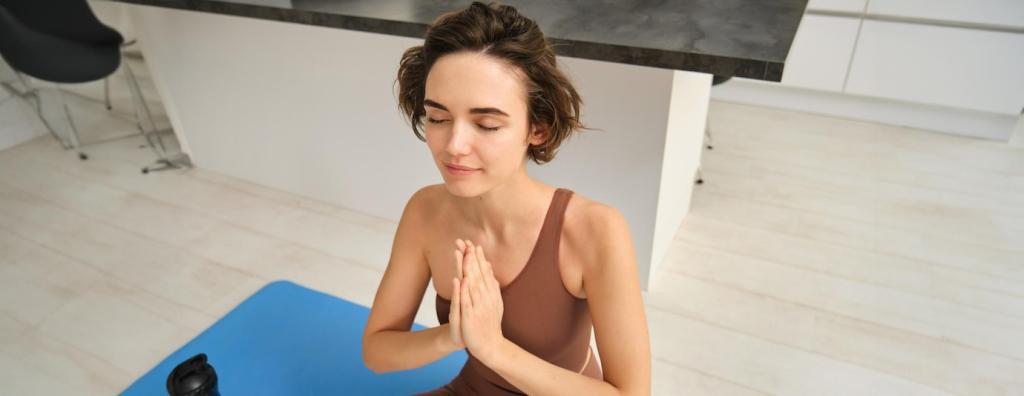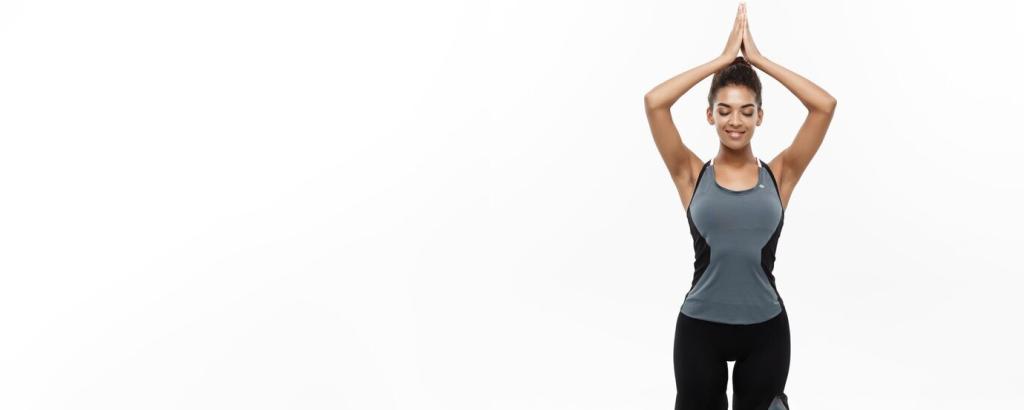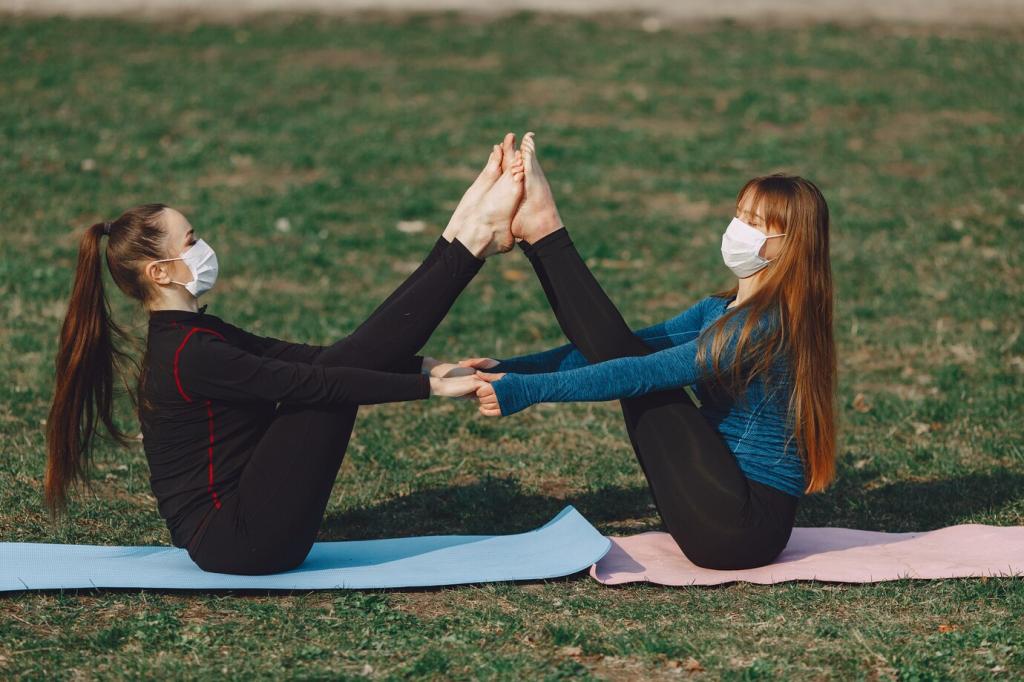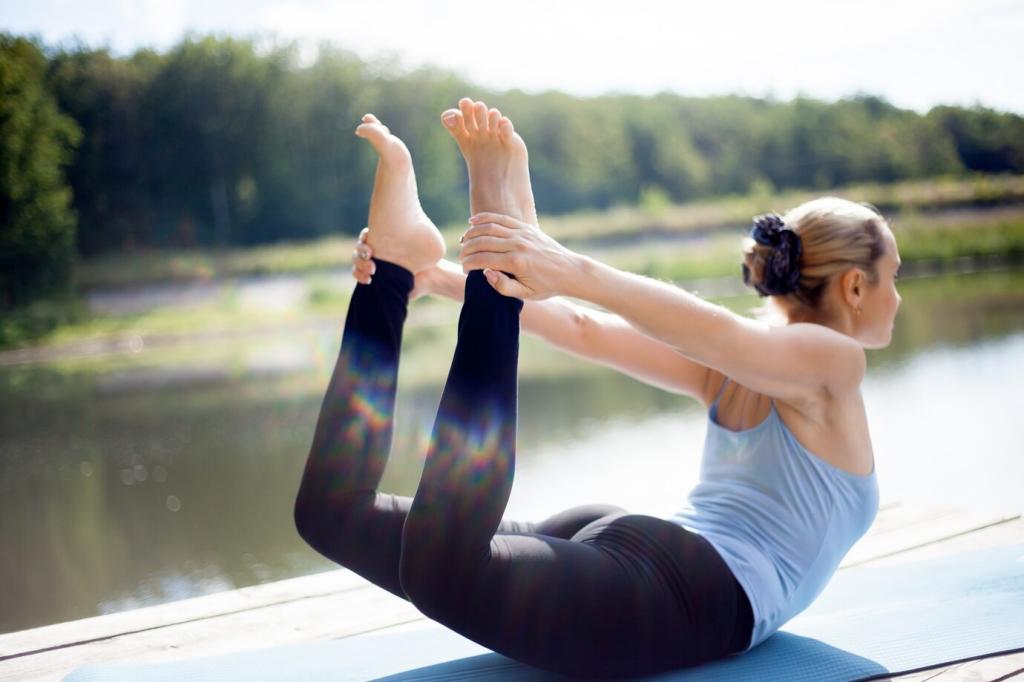Foundation: Warming Up the Core and Hips
Begin with nasal breathing and gentle Ujjayi to lengthen exhales, nudging parasympathetic calm. Add light mula and uddiyana bandha to engage transverse abdominis. Two minutes of 360° rib expansion primes stability for demanding core-driven poses.
Foundation: Warming Up the Core and Hips
Cycle through cat-cow with spinal segmentation, lunge pulses with posterior pelvic tilt, and hip CARS. Keep moves slow and deliberate. This sequence hydrates tissues, improves proprioception, and readies your hips for splits, twists, and arm balances.
Foundation: Warming Up the Core and Hips
Aim for ten to fifteen minutes of gradually intensifying movement. Heat increases elasticity, but intelligence guides load. Check breath quality as your barometer; if it frays, scale back before approaching peak poses and complex transitions.
Foundation: Warming Up the Core and Hips
Lorem ipsum dolor sit amet, consectetur adipiscing elit. Ut elit tellus, luctus nec ullamcorper mattis, pulvinar dapibus leo.






